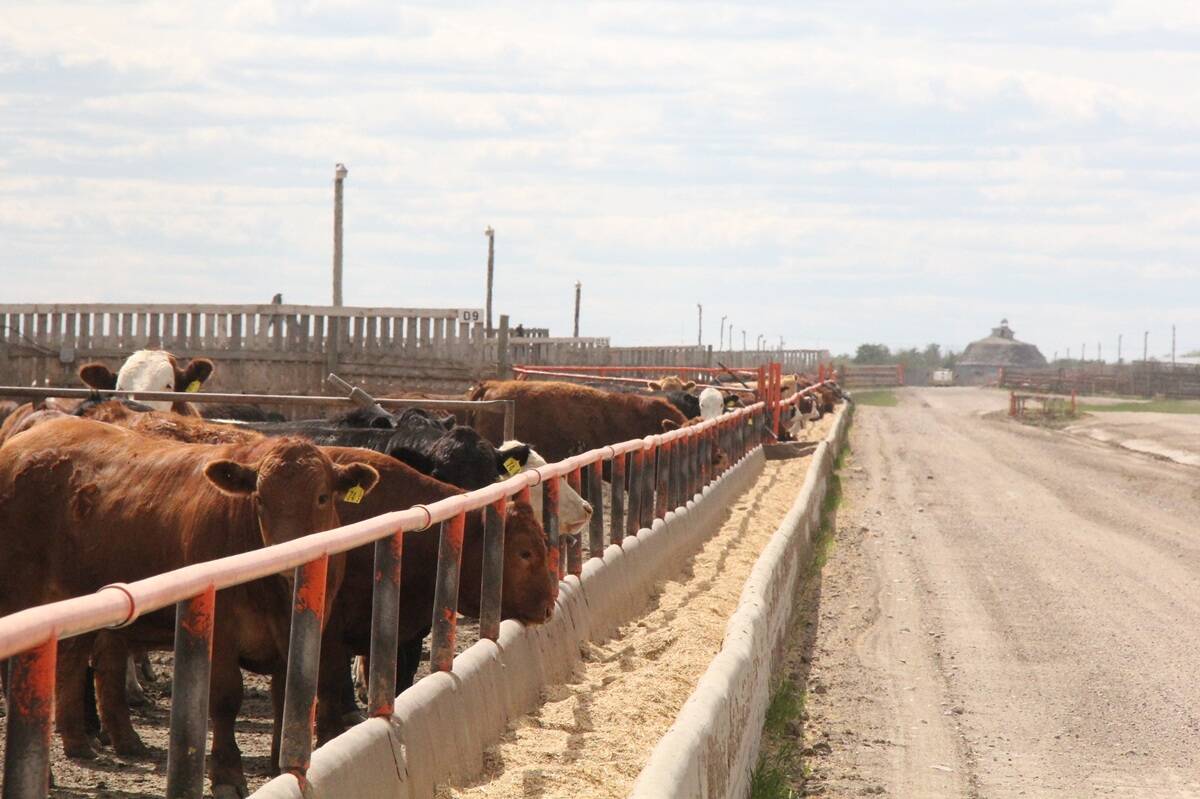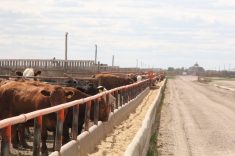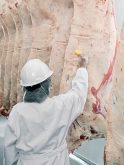When cattle are severely stressed before slaughter there’s an increased risk that the rib-eye will remain dark red instead of blooming to a bright red colour. This phenomenon is called dark cutting. Extremely dark fresh beef isn’t visually appealing to consumers and has a shorter shelf life, so Canada’s grading system assigns these carcasses to a B4 grade to keep this beef out of retail stores.
Dark cutting only averaged 1.25 per cent of Canada’s youthful fed slaughter in 2021, but it presents a significant cost. For starters, dark cutting primarily affects the rib-eye — other muscles in the carcass (especially those in the forequarter and the outside round) may look perfectly normal. But because the B4 grade is assigned to the whole carcass, and because retailers won’t sell any fresh B4 beef, there aren’t many opportunities to add value to the unaffected beef cuts. Dark cutters also tend to occur sporadically, so it’s challenging for packers to find buyers for a handful of carcasses per day or week. Because of this, packers discount B4 carcasses by around $300 each. These discounts exceeded $10 million across the Canadian industry in 2016-17.
Dark-cutting carcasses are not assigned to a stand-alone grade in the U.S. Instead, they simply drop the quality grade by one score. So, a dark-cutting carcass with Prime marbling is downgraded to Choice, a dark-cutting Choice carcass is downgraded to Select, and so on. Retailers can still specify that they don’t want dark-cutting beef in their orders, but unaffected muscles from those same carcasses would still be eligible for retail. We could do the same thing in Canada by downgrading a dark-cutting Canada Prime carcass to AAA, a dark-cutting AAA to AA, or a dark-cutting AA to A.
Read Also

Unwinding the fibre in feedlot cattle diets
Research into how barley rolling method and undigestible NDF levels affect animal performance and digestive health in finishing diets
Researchers from Agriculture and Agri-Food Canada in Lacombe recently published a pair of studies examining whether this approach could work in Canada (Exploring innovative possibilities of recovering the value of dark-cutting beef in the Canadian grading system; doi.org/10.1016/j.meatsci.2017.11.013 and Towards improving classification of Canadian dark-cutting beef carcasses: Consumer sensory evaluation; doi.org/10.1016/j.meatsci.2022.109008).
What they did: Both studies compared the eating quality of dark-cutting AA rib-eyes to normal A rib-eyes and compared the eating quality of dark-cutting AAA rib-eyes to normal AA rib-eyes. One study used laboratory measurements and eight trained sensory panellists to compare the eating quality of 100 dark-cutting steaks to 100 normal steaks. The other study used 100 regular consumers (equal numbers of men and women, equally split among 18-25, 26-35, 36-45, 46-55 and 56-plus years of age) to compare the visual appeal and eating quality of steaks from 60 dark-cutting steaks and 60 normal steaks.
What they learned: Laboratory measurements simulating the shear force required to bite through a steak indicated that dark-cutting AA steaks were tougher than normal A steaks, and that dark-cutting AAA steaks were tougher than normal AA steaks. But machines aren’t people.
Trained taste panellists detected slightly less tenderness, slightly less beef flavour and slightly more off-flavours in dark-cutting AA steaks compared to normal A steaks. On the other hand, dark-cutting AA steaks were juicier than normal A steaks. The dark-cutting beef was juicier because it loses less moisture during cooking than normal beef, not because it had more marbling. They only detected slight decreases in tenderness and slightly more off-flavours in dark-cutting AAA steaks compared to normal AA steaks. But trained taste panellists aren’t like the rest of us. Trained taste panellists are the beef equivalent of wine connoisseurs or audiophiles. They can detect very subtle differences that most consumers wouldn’t notice.
Consumer panellists generally preferred the colour of (and said they’d be more likely to purchase) a fresh normal AA steak than a dark-cutting AAA steak, but saw no differences between the appearance of a fresh normal A steak versus a dark-cutting AA steak. There was no difference in the visual appearance of any of the steaks after they were cooked. Consumer panellists didn’t detect differences in the tenderness, juiciness or flavour of dark-cutting AA steaks compared to normal A steaks, and found that the tenderness, juiciness and flavour of dark-cutting AAA steaks were at least as good as that of the normal AA steaks.
The bottom line is that although sensitive lab equipment and trained experts could detect eating quality differences between dark-cutting steaks and normal steaks from a lower quality grade, the 100 regular consumers who were part of this study didn’t.
So, what does this mean to you? The discounts packers apply to the B4 grade get factored into the price feedlots bid for feeder calves. Eliminating the B4 grade for dark cutters and simply dropping the quality grade wouldn’t eliminate these discounts completely, but it may be a low-risk option to reduce these industry-wide losses. It would help add value to the normally coloured beef cuts from those same carcasses and would open the door to selling cooked dark-cutting beef through the mainstream restaurant and food service sector where consumers likely wouldn’t notice the difference. Beef purveyors and markets with a preference for bright red beef could still make “no dark beef” a condition in their buying specifications, similar to how “no added hormones,” Certified Sustainable, breed-specific, or other marketing programs operate.
The Beef Cattle Research Council is funded by the Canadian Beef Cattle Check-Off. The BCRC partners with Agriculture and Agri-Food Canada, provincial beef industry groups and governments to advance research and technology transfer supporting the Canadian beef industry’s vision to be recognized as a preferred supplier of healthy, high-quality beef, cattle and genetics.

















